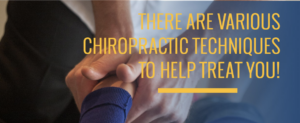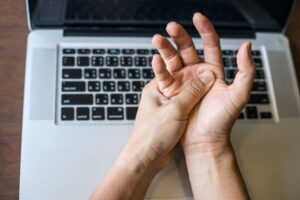Remember when you are younger, your parents always tell you to “sit up straight”? Actually, our spine is not meant to be straight. Our spine has curves. We have a 42 degree curve in our neck area, 37 degree curve in our upper back area and 40 degree curve in our lower back area.
With the over use of technology, car accidents or trauma, and the inactive lifestyle, many people start to lose their curves or even reverse their curves. Research has shown that a decrease in spinal curvature can lead to:
- GERD( 1)
- lung function ( 2)
- neck pain (3)
- low back pain (5)
- decreased grip strength (3)
- decreased sleep quality in children (4)
In extreme cases, if there is big a deviation from the normal spinal curvature, it is diagnosed as scoliosis . Many people with scoliosis are in so much pain that they choose to undergo surgery. Did you know? If you were able to detect scoliosis at a young age, it is actually preventable!
There are also some home exercises you can do to help your spine to be a neutral position.
1)Standing wall press. This exercise helps you activate and strengthen the deep spine muscles and abdominal muscles while improving your posture. If you cannot touch your head against the wall, place a pillow or cushion behind your neck.Stand with your back against the wall and your arms by your sides with your knuckles and fingers touching the wall. Once you are in position, push yourself into the wall like you are going to sink into it. Your head, back, buttocks and calves should also be in contact with the wall
2)Tuck your chin in and hold it for 5 secs. You can do this easy exercise at home or at work
3) Get a lumbar pillow to support your low back curve when you are sitting
Many times, the spine curvatures are reversible before major degeneration happens. Start taking care of your spine now! Don’t wait until pain to signal you to take care of yourself because it might be too late.
References
Matsuzaki H, et al. High prevalence of larygnopharyngeal reflex disease in patients with lumbar phyosis. J. voice. 2016 Nov;30(6): 773.e1-773.e5.
Fedorchuk C, et al. Improvements in Lung Function, Dysautonomia and Grip Strength in a Patient with Multiple Sclerosis Following Correction of Vertebral Subluxation Using Chiropractic BioPhysics®: A Case Study and Selective Review of Literature.Yip CH, et al. The relationship between head posture and severity and disability of patients with neck pain. Man Ther. 2008 May;13(2):148-54. Epub 2007 Mar 23.Korovessis, et al. Backpacks, Back Pain, Sagittal Spinal Curves and Trunk Alignment in Adolescents: A Logistic and Multinomial Logistic Analysis Spine: January 15th, 2005 – Volume 30 – Issue 2 – p 247-255
Chun et al. The relationship between low back pain and lumbar lordosis: a systemic review and meta-analysis. The spine jounral 17 (2017): 1180-1191
.




